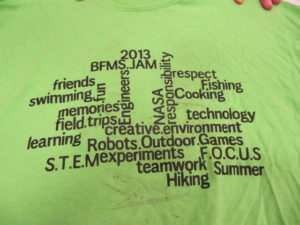STEM Professional Development for Informal Educators: Takeaway Six
This is the sixth in a series of posts on takeaways in facilitating STEM professional development for informal educators.
6. Many of the informal education programs did not include STEM in their programs for two reasons. One, as discussed in the second post, was because the educators were not comfortable with teaching STEM. The second major reason was because the educators were not aware of STEM resources they could easily incorporate into their program with minimal cost.
Since this was a NASA grant funded program, we focused on NASA resources. NASA has an enormous amount of free on-line resources ranging from lesson plans, videos, educators, programs, games, musicals, songs, pictures, and more. It was a challenge to not overwhelm the educators with the possibilities. What the educators really liked about these resources, especially the lessons, was that they generally only required household materials! No expensive equipment was required.
We educated the educators about apps for their mobile devices. They really had fun exploring those free apps!! We also assisted the informal educators in discovering potential resources within or near their community and how to integrate them into their program. These resources included STEM professionals and organizations.





